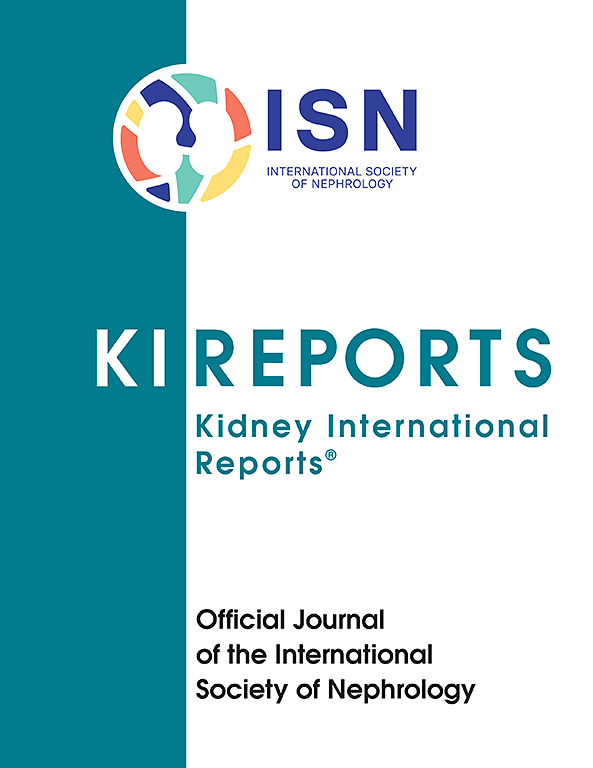利用机器学习从频谱多普勒波形中检测动脉粥样硬化性肾动脉狭窄的初步研究
IF 5.7
2区 医学
Q1 UROLOGY & NEPHROLOGY
引用次数: 0
摘要
我们研究了机器学习(ML)是否可以使用肾双超声(DUS)的频谱多普勒波形来确定动脉粥样硬化性肾动脉狭窄(ARAS)。方法回顾性分析2000年1月至2022年1月期间,经血管造影证实为单侧正常肾脏(ARAS)并需要肾动脉支架置入术的患者。排除标准为术前肾脏DUS图像、合并纤维肌肉发育不良、两侧有1条以上肾动脉,或先前放置的肾动脉支架伴支架内再狭窄。选择了200例患者;以患肾为阳性病例,以对侧肾为对照。利用WebPlot数字化仪对外包络线进行人工跟踪,重建频谱波形。然后将图形坐标转换为一维速度信号。信号被标记为ARAS和正常,然后随机分为训练(80%)和测试(20%)数据集。训练一维卷积神经网络(CNN)对信号进行分类并检测ARAS。使用学习率为0.001的Adam优化器和交叉熵损失函数。采用五重交叉验证,训练模型1000次。结果198例患者中,剔除2例因信号提取不足,共使用396个信号(中位年龄72岁,女性占51.0%)。训练模型的总体准确度为0.95,精密度为0.94。受试者工作特征曲线下面积为0.97。结论ml可用于DUS动脉谱多普勒波形检测ARAS。本文章由计算机程序翻译,如有差异,请以英文原文为准。

Pilot Study of Using Machine Learning to Detect Atherosclerotic Renal Artery Stenosis From Spectral Doppler Waveforms
Introduction
We investigated whether machine learning (ML) could be used to determine atherosclerotic renal artery stenosis (ARAS) using spectral Doppler waveforms in renal duplex ultrasound (DUS).
Methods
Patients with unilateral ARAS (contralateral normal kidney) confirmed by angiogram and requiring renal artery stent placement were retrospectively identified from January 2000 to January 2022. The exclusion criteria were unavailable preoperative renal DUS images, concomitant fibromuscular dysplasia, more than 1 renal artery on either side, or a previously placed renal artery stent with in-stent restenosis. Two hundred patients were selected; the affected kidney was used as the positive case and the contralateral kidney was used as the control. The spectral waveforms were reconstructed by manually tracing the outer envelope using WebPlot Digitizer. The graphical coordinates were then converted into 1-dimensional velocity signals. Signals were labeled as ARAS and normal and then randomly divided into training (80%) and testing (20%) datasets. A 1-dimensional convolutional neural network (CNN) was trained to classify the signals and detect ARAS. An Adam optimizer with a learning rate of 0.001 and a cross-entropy loss function were utilized. Five-fold cross-validation was applied, and the model was trained for 1000 epochs.
Results
A total of 396 signals were used from 198 patients after excluding 2 patients because of inadequate signal extraction (median age = 72 years, females = 51.0%). The overall accuracy of the trained model was 0.95 with a precision of 0.94. The area under the receiver operating characteristic curve was 0.97.
Conclusion
ML has been successfully employed to detect ARAS using arterial spectral Doppler waveforms in DUS.
求助全文
通过发布文献求助,成功后即可免费获取论文全文。
去求助
来源期刊

Kidney International Reports
Medicine-Nephrology
CiteScore
7.70
自引率
3.30%
发文量
1578
审稿时长
8 weeks
期刊介绍:
Kidney International Reports, an official journal of the International Society of Nephrology, is a peer-reviewed, open access journal devoted to the publication of leading research and developments related to kidney disease. With the primary aim of contributing to improved care of patients with kidney disease, the journal will publish original clinical and select translational articles and educational content related to the pathogenesis, evaluation and management of acute and chronic kidney disease, end stage renal disease (including transplantation), acid-base, fluid and electrolyte disturbances and hypertension. Of particular interest are submissions related to clinical trials, epidemiology, systematic reviews (including meta-analyses) and outcomes research. The journal will also provide a platform for wider dissemination of national and regional guidelines as well as consensus meeting reports.
 求助内容:
求助内容: 应助结果提醒方式:
应助结果提醒方式:


